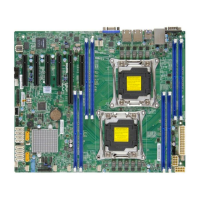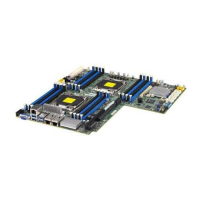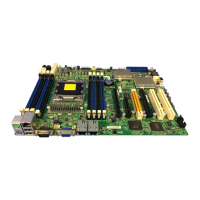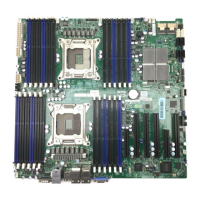Chapter 5: Running Setup
5-15
display activity for the length of time specified in the Standby Timeout
(Minute) option, the computer enters a power savings state. The settings are
Monitor
or
Ignore
.
Device 6 (Serial port 1)
Device 7 (Serial port 2)
Device 8 (Parallel port)
Device 5 (Floppy disk)
Device 0 (Primary Master IDE)
Device 1 (Primary Slave IDE)
Device 2 (Secondary Master IDE)
Device 3 (Secondary Slave IDE)
When set to
Monitor
, these options enable event monitoring on the specified
hardware interrupt request line. If set to Monitor and the computer is in a
power saving state, AMIBIOS watches for activity on the specifies IRQ line.
The computer enters the Full On state if any activity occurs. AMIBIOS
reloads the Standby and Suspend timeout timers if activity occurs on the
specified IRQ line.
Note: The Optimal default setting for each option is
Ignore with the exception of Devices 0 (Primary Master IDE) and 6 (Serial
Port 1) which should be set to Monitor. The Fail-Safe default for each
option is Monitor.
LAN Wake-Up
RTC Wake-UP
Options for LAN Wake-Up and RTC Wake-Up are
Disabled
or
Enabled
.
When enabled, the Hour and Minute functions become available.
5-1-5 PCI/PnP Setup
Plug and Play-Aware OS
The settings for this option are
No
or
Yes
. Set this option to
Yes
if the
operating system in the computer is aware of and follows the Plug and Play
specification. AMIBIOS only detects and enables PnP ISA adapter cards
that are required for system boot. Currently, only Windows 95 is PnP-Aware.
Set this option to
No
if the operating system (such as DOS, OS/2, Windows
3.x) does not use PnP. You must set this option correctly. Otherwise, PnP-
aware adapter cards installed in the computer will not be configured properly.
PCI Latency Timer (PCI Clocks)
This option specifies the latency timings in PCI clocks for all PCI devices.
The settings are
32
,
64
,
96
,
128
,
160
,
192
,
224
, or
248
.
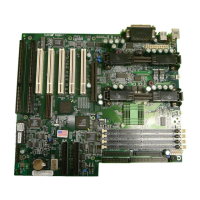
